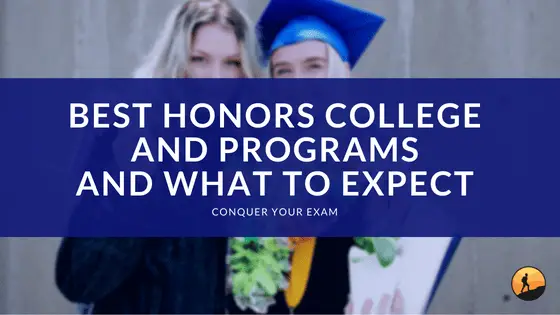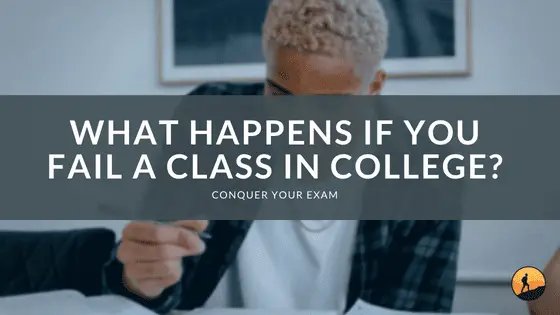Reading comprehension is an encompassing topic, and whether you are a college student, or an adult trying to introduce your kids to reading, it’s something you would occasionally struggle with. Fortunately, you can learn reading comprehension if you know the right strategies. However, students must understand the need for comprehending what they read before finding out the correct reading comprehension strategies that will suit their needs. This article provides all the information you’ll need on this topic.
 Why Do We Use Reading Strategies?
Why Do We Use Reading Strategies?
When we read, we must understand the meaning of the text we are reading in the proper context. However, as we progress through school, the type of text we read becomes more complex, and our ability to read and understand the meaning of the text we read becomes increasingly tricky. As a result, students need to adopt the right reading strategies to know what they should read before, during, and after tests for effective learning. Below, let’s review some of the reasons why you should use the right reading strategies.
- The right reading strategies can help you become an independent reader.
- It allows you to acquire knowledge in a wide variety of topics.
- With essential reading strategies, you can identify crucial ideas in a text
- Enhance understanding Remember what we read
- Make connections and inferences
- Make useful predictions and ask relevant questions about a text
How Do Reading Strategies Help Students?
Reading strategies generally refer to conscious and creative efforts students adopt to understand the contextual meaning of a text. Texts could be academic or non-academic. Students generally shun passive reading for active reading when the correct reading strategies are adopted, therefore improving understanding ability.
Unfortunately, not all students make an effort to adopt the right reading strategies. Perhaps this attitude is born out of the misunderstanding of what reading strategies are or how it helps. To help you better understand why you should adopt the right reading strategies, this section explains the different areas where the right reading strategies can help students.
It helps students to get prior knowledge of what they are reading. For example, discussing experiences related to books and topics would help students relate better to such books when reading. Having prior knowledge makes the text easier to read and makes the students connect with the text.
- Help students develop the ability to read between the lines and make better judgments.
- The ability to take their judgment and compare it to the actual text.
- Students also learn to ask intelligent questions about the texts they are reading.
What are the 7 Reading Strategies?
As explained earlier, the right reading strategies are significant for students’ comprehension and overall success. However, learning to read takes skills that are practiced and developed over time. The national reading panel carried out extensive research for reading comprehension and discovered helpful reading strategies for struggling students. Some of these techniques caused a significant increase in the understanding of students. The panel also found these strategies to be effective when used in combination rather than as stand-alone.
Here, let’s review some examples of reading strategies and how to teach them to students.
Activation strategy
This strategy works on the assumption that every student has prior knowledge of something. It is easier for students to understand a text they are reading if they can relate it to something they know or have seen before. Activation helps students to recall relevant and meaningful information from previous knowledge to make a personal connection to a text and incorporate new knowledge.
How to learn this strategy
- Think out loud and stop at intervals to explain how it relates to your past experiences. Think of where you have seen a particular thing, when you saw it, how you felt, what the text reminds you of, what it made you think of. Doing this makes the text relatable.
- In the case that there is no prior knowledge of a particular text. You can go about acquiring prior knowledge by first skimming through the text. Then look for real-life examples; ask yourself how it is different or similar from the book. You can then read through the book again because you have formed an experience from it.
Inferring strategy
You have most likely heard the phrase “read between the lines.” This phrase is basically what this strategy is about. You will have to critically look at the text you are reading by considering what it says and what is not written but implied by tone or language to extract meaning from the text.
How to learn this strategy
- Ask yourself, “why.” After reading a text, you should form an opinion and ask yourself how you came about that opinion; what do I now realize from this text? What evidence supports this thinking?
Monitoring-clarifying strategy
It is essential to reflect on your understanding of a text to clarify any grey areas and determine whether you comprehend what you are reading. This strategy teaches students to think about what they are reading both during reading and after.
How to learn this strategy
- You ask yourself this question; “do I know what I think I know?” you can ask yourself further questions such as “do I understand this?” “What are the key points?”
Questioning strategy
Questioning strategy helps you engage and dialogue with the text you are reading both before, during, and after the course of reading. Questioning is an effective strategy because it helps you to understand the idea behind the author’s thoughts.
How to learn this strategy
- Before reading, you need to ask yourself what you hope to discover from the text.
- During reading, you should ask questions about the key points and facts expressed in the text, motives, and message of the text.
- After reading, you can ask yourself if the text answered your questions, or if you learned anything new, or did you understand the text message.
Determining importance strategy
Your ability to sort and prioritize information and analyze the features of a text is essential for comprehension. Reading a text is like drowning in a sea of words. Selecting the appropriate and vital information is necessary to develop an in-depth understanding of that text, answer questions, and identify problems and solutions.
How to learn this strategy
- Ask yourself what the message and purpose of the text are.
- Note the type of text and its purpose, whether to persuade, explain or describe.
Summarizing technique
To test your understanding of a text, it is crucial to retell or rewrite the meaning of the text in your own words, different from those used in the text. Summarizing technique ensures that you have been able to identify the main points of a text.
How to learn this strategy
- Ask yourself what the text was mainly about and what clues or words point to this idea.
- What information is essential and which is trivial.
- Divide the text into sections or subheadings, read each and identify the main point talked about.
Visualizing-organizing
A pathway to understanding a text is building a mental picture about the text to gather more information. Words can be abstract. We remember a text when we fully submerge our senses by imagining the sound, smell, taste, feel, and looks of what the text is trying to convey. Visualizing-organizing is one of the most critical reading strategies for college students.
How to learn this strategy
- When you read a text, write down or draw out what you think the concept of the text is trying to convey.
- Associate taste, smell, sound, feel, and looks to ideas to help you create a clear mental image.
- Create a mind map with the main idea at the center and all connecting ideas branching out from it like a tree.
How Can You Effectively Apply Reading Strategies?
The most efficient ways to apply reading strategies are in three stages: reading, reading, and reading.
Before reading
To help prepare you for what you are about to read. You can skim through the headings, sub-headings and ask yourself what you expect to learn from the text.
During reading
To help you connect with the text. First, ask important questions like the author’s motivation, the main idea, and how it relates to the prior knowledge you already have. Then summarize the text using words you understand, symbols, subheadings, etc.
After reading
To help you apply what you have learned from the text. What is the text’s central idea, and how the facts and information in the text help change your perspective about the main idea? After reading, you ask yourself what the purpose of the text is and if it could answer all your questions.
How to Improve Your Reading Strategies?
To read is to know, and the more you prioritize reading, the more accessible every day can be for you. Reading is essential and fundamental to every day. For example, reading something simple such as the menu at your favorite restaurant, can help improve your reading speed and comprehension skills. The tips below are the first steps to literacy, and they’ll help you make the most of the strategies you have learned to improve your reading comprehension further.
Practice
Practicing is an excellent way to improve your reading skills. Set aside time each day to practice the strategies you have learned in the text or books, irrespective of whether they are articles, fiction, or nonfiction.
Vocabulary
Your vocabulary will affect your reading comprehension. When you improve your language, you will know the meanings of words and understand the text you are reading. This will increase your ability to form ideas and make the right inference. If you’re looking for the best English vocabulary books to start with, check out our article on that.
Re-read a text
You re-read a text to ensure that you understood the message the text was passing. If you finish reading a topic or subheading and don’t know what message it gave, re-read it again, this time slowly, with these strategies at the forefront of your mind.
Read aloud
Reading aloud forces you to read slowly, giving your brain time to process what it is reading.
Take away distractions
Distractions affect your focus and then your ability to comprehend and understand the text. It would be best if you concentrated on the text to make the most of your reading time. There’s no better way to ensure maximum concentration than by putting away distractions. We typically advise turning off electrical devices and putting away mobile gadgets unless you read directly from them.
Wrapping Things Up: 7 Strategies of Reading
No doubt, knowing the right reading strategies will help you comprehend better. Many people underestimate the role of reading strategies in facilitating comprehension; hence, they do very little to develop this area. Unfortunately, even the brightest students will struggle if they don’t leverage the right reading strategies. We understand how difficult it can be for anybody, and that’s why we’ve explained everything you should know about reading strategies in this article. We’ve also provided a step-by-step guide to help you incorporate the right reading strategies.
Check out our ultimate guide to reading here.

 Why Do We Use Reading Strategies?
Why Do We Use Reading Strategies?






